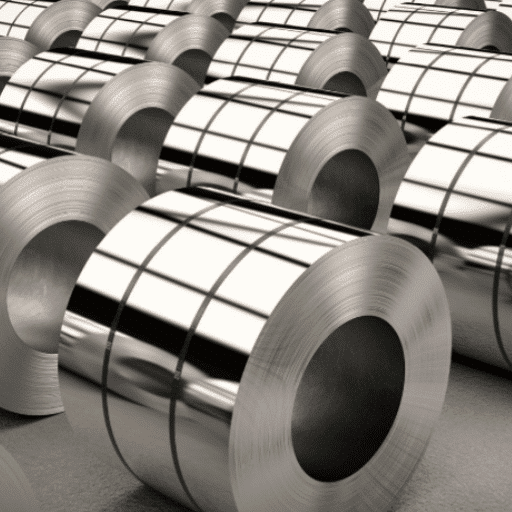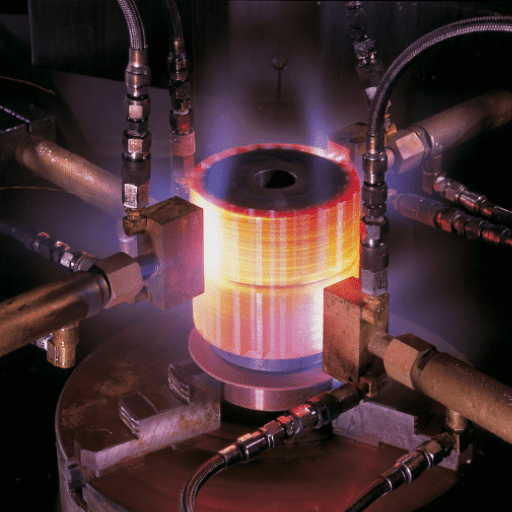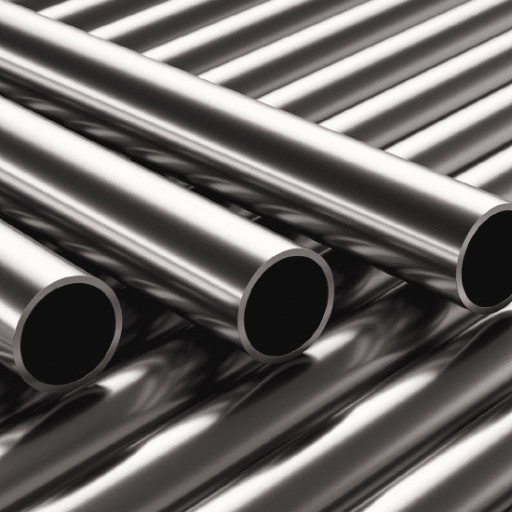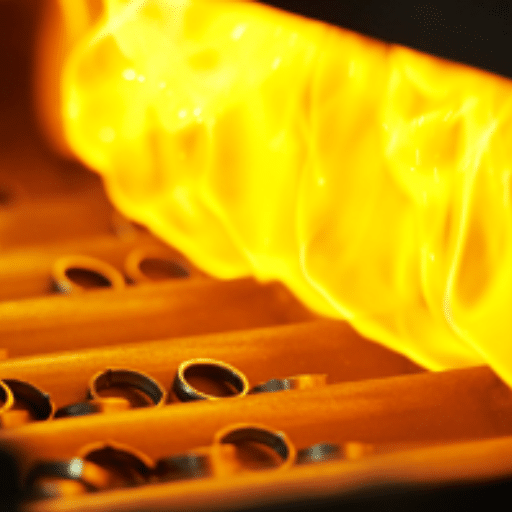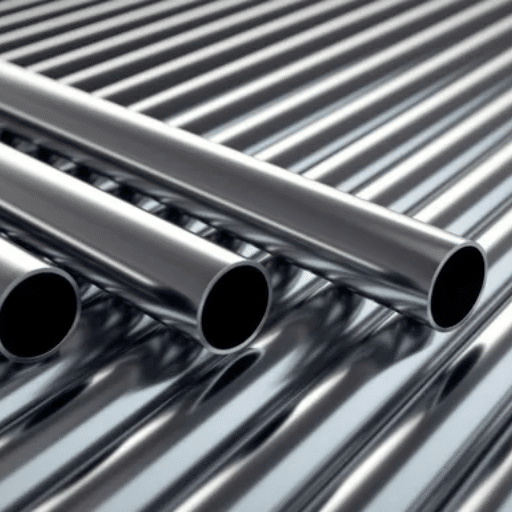Exploring the electrical and thermal properties of stainless steel and its comparison with other conductive metals
Among all the properties that metals possess, the most fascinating question is their ability to conduct electricity and the extent of that ability. Stainless steel, which is not only strong but also resistant to rust, invites the question: what about its electrical properties? Would one say that stainless steel is a conductor of electricity, at least as good as some other metals, or does its characteristic blend of elements make it less effective?
This guide will elaborate on the science which supports stainless steel’s conductivity, and will explain its properties and uses, as well as its comparison with other metals such as copper and aluminum. This guide will be helpful not only to engineers but also to students studying materials science and to anyone who is merely curious to know more about the relationship between electricity and stainless steel.
Introduction to Conductivity

Conductivity is the property that determines the extent to which a material can be passed through by an electric current. Among all metals, copper, aluminum, and silver are the most conductive ones due to their loose electrons, which make the transfer of electricity very efficient.
On the other hand, stainless steel, despite being a conductor, has a conductivity that is way below the mentioned metals because of its elements, such as chromium and nickel, that are included in the composition. The latter adds to the alloy’s durability and resistance to rust, but at the same time, it diminishes its entire capacity for electricity conducting.
What is Conductivity?
Conductivity is defined as a property that characterizes a material’s ability to let electric current flow through it. The major factor that determines this property is the presence of free electrons in the material that are capable of moving and carrying the electrical charge. Conductivity is expressed in terms of siemens per meter (S/m) and varies a lot from one substance to another.
Key Factors Affecting Conductivity:
- Presence of free electrons – Essential for carrying electrical charge
- Temperature – Affects electron mobility
- Material structure – Crystal lattice arrangement impacts flow
- Impurities – Can significantly alter conductivity
Types of Conductors
⚡ Metallic Conductors
The most common conductor type. Copper is most utilized for wiring due to right conductivity and longevity. Silver is the best conductor but used in specialized cases due to price.
🔌 Semiconductors
Materials like silicon and germanium with smallest gap between electrical material types. Indispensable in modern electronic devices like transistors, diodes, and integrated circuits.
💧 Ionic Conductors
Present in solutions where ions are free, like saltwater. Electrical flow is allowed by movement of charged particles rather than electrons.
❄️ Superconductors
At extremely low temperatures, these materials lose all electrical resistance. High potential for future technology in medical imaging (MRI), maglev trains, and energy-efficient power grids.
The Importance of Electrical and Thermal Conductivity
Electrical and thermal conductivity are very important properties that influence many different industries, from energy sector to electronics and more.
| Application Area | Key Statistics & Benefits |
|---|---|
| Electrical Wiring | About 60% of world’s electrical wiring is copper due to awesome conductivity and durability |
| Heat Management | Graphene has thermal conductivity up to 5,300 W/m·K compared to copper’s 400 W/m·K |
| Electric Vehicles | Requires efficient electrical flow and effective heat dissipation for batteries and motors |
| Superconductors | Allow current flow without resistance at cryogenic temperatures |
| Electronics Cooling | Silver and diamond used in cooling systems to keep microprocessors at safe operating temperatures |
These applications highlight the cruciality of property optimization for technological and industrial advancement in terms of performance, efficiency, and sustainability.
Stainless Steel as a Conductor

⚠️ Key Finding: Lower Conductivity
The conductivity of stainless steel is around 1.45 × 10⁶ S/m, which equals about 40 times lower than that of pure copper at room temperature.
The alloy metal, known as stainless steel, possesses the qualities of being resistant to corrosion, having a long life, and providing good mechanical strength, which is why it is regarded as a suitable material in industrial applications. It is still, however, far from being the most efficient conductor when compared to the usual electric materials such as copper and aluminum.
Understanding the Conductivity of Stainless Steel
| Material | Electrical Conductivity (S/m) | Comparison |
|---|---|---|
| Copper | 5.9 × 10⁷ S/m | ⭐ Best Conductor |
| Silver | ~6.3 × 10⁷ S/m | ⭐⭐ Highest Conductivity |
| Stainless Steel | 1.1-1.45 × 10⁶ S/m | ❌ Poor Conductor |
🔬 Recent Developments:
- Addition of graphene can exhibit 20% increase in electric conductivity
- Silver nanoparticles integrated into stainless steel composites improve performance
- Electroconductive coatings enhance surface conductivity for electronic circuits
- Maintains same strength and corrosion resistance during enhancements
Stainless Steel vs Copper: A Comparison
🥉 Copper
Strengths:
- High electrical conductivity
- Excellent thermal conductivity
- Top choice for wiring & motors
- Efficient energy transmission
Weaknesses:
- More likely to corrode
- Shorter lifespan in harsh environments
- Requires more maintenance
🛡️ Stainless Steel
Strengths:
- Exceptional durability
- Outstanding corrosion resistance
- High mechanical strength
- Long-term reliability
- Low maintenance costs
Weaknesses:
- Poor electrical conductivity
- Not suitable for primary conduction
💡 Decision Factors:
When it comes down to finally making a decision, the superiority of either stainless steel or copper will always depend on the application’s requirements. Where utmost conductivity is necessary, copper is unbeatable. Where durability and resistance to adverse conditions are paramount, stainless steel excels. Consider: conductivity requirements, environmental factors, cost, and longevity.
Why Stainless Steel is Considered a Poor Conductor of Electricity
Stainless steel is considered a poor conductor of electricity when compared to materials like copper or aluminum. Its electrical conductivity is relatively low due to its higher resistivity.
| Material | Resistivity (µΩ·cm) | Conductivity Rating |
|---|---|---|
| Copper | ~1.68 µΩ·cm | ⭐⭐⭐⭐⭐ Excellent |
| Stainless Steel | 69-90 µΩ·cm | ⭐ Poor |
| Copper has nearly 28 times the conductivity of stainless steel | ||
🔬 Why the Low Conductivity?
The low conductivity of stainless steel is primarily due to its alloy composition, which usually contains elements like:
- Chromium – Provides corrosion resistance
- Nickel – Enhances durability
- Carbon – Increases strength
These elements disturb the atomic structure and create electron scattering, reducing the mobility of electrons and diminishing conductivity. This leads to greater energy loss as heat.
Thermal Conductivity of Stainless Steel

Among other metals, stainless steel has the lowest thermal conductivity compared to aluminum and copper. Its thermal conductivity relies on the particular grade, with most stainless steel types getting thermal conductivity of around 15-25 W/m·K at room temperature.
Defining Thermal Conductivity
Thermal conductivity is an indicator of how well a material can transfer heat. It is usually measured in watts per meter-kelvin (W/m·K), and it signifies the quantity of heat that is able to move through a material of a certain thickness during a specified time when there is a temperature difference applied.
Comparing Thermal Conductivity of Metals
| Material | Thermal Conductivity (W/m·K) | Best Applications |
|---|---|---|
| Copper | ~385-400 W/m·K | Heat exchangers, electrical wiring |
| Aluminum | ~205 W/m·K | Heat sinks, automotive parts |
| Stainless Steel 304 | ~16 W/m·K | Cookware, thermal insulation, cryogenic storage |
| Stainless Steel 316 | ~15 W/m·K | Pipelines, temperature-stable environments |
| Carbon Steel | ~45 W/m·K | Construction, general heat transfer |
✓ Advantages of Low Thermal Conductivity:
The lower thermal conductivity of stainless steel renders it suitable for applications requiring constant temperature, such as cookware, cryogenic storage containers, and pipelines where insulation is an advantage. This property provides excellent thermal insulation and supports temperature stability in various environments.
Applications Where Thermal Conductivity is Critical
💻 Electronics and Semiconductors
Thermal conductivity is pivotal for heat removal from crucial device parts, preventing overheating and ensuring stable operation.
Key Materials: Copper and aluminum for heat sinks and circuit boards. High-performance thermal interface materials (TIMs) with 4-10 W/m·K conductivity.
✈️ Aerospace and Aviation
Materials selected for aircraft and spacecraft systems to regulate temperature during extreme heat and cold conditions.
Key Materials: Reinforced carbon-carbon (RCC) or ceramics with conductivity values tweaked for both insulation and heat resistance.
🌡️ HVAC Systems
Proper operation contingent upon thermally conductive materials for efficient heat transfer during heating or cooling.
Key Materials: Copper coils in heat exchangers for maximizing energy efficiency and durability.
🔋 Thermal Energy Storage Systems
Advanced energy solutions using phase change materials (PCMs) or thermal fluids for heat storing and releasing.
Key Materials: Paraffin wax with thermal conductivity of 0.2-0.4 W/m·K for efficient thermal energy retention and discharge.
🚗 Automotive Industry
Thermal conductivity major factor in vehicle design for engine components, brake systems, and EV battery management.
Key Materials: Aluminum-based components with conductivity of ~235 W/m·K to endure and dissipate heat during operation.
Factors Influencing Conductivity
🧪 Material Composition
Thermal conductivity strongly dependent on composition. Silver, copper, and aluminum have high conductivity due to free electrons. Pure copper: ~400 W/m·K; brass (copper alloy): several times lower due to zinc content.
🌡️ Temperature
Very important factor. Metals have lower thermal conductivity at higher temperatures as increased lattice vibrations hinder electron movement. Ceramics and polymers may become more conductive at high temperatures.
📐 Density and Structure
Material density and atomic structure affect conductivity. High-density materials with closely packed atoms are good heat conductors. Crystalline structures usually have higher conductivity than amorphous structures.
⚠️ Impurities and Defects
Existence of impurities or defects can reduce thermal conduction significantly. Impurities block heat conduction by electrons or phonons, creating resistance. Even minor impurities can significantly attenuate conductivity.
Alloy Composition and Temperature Effects
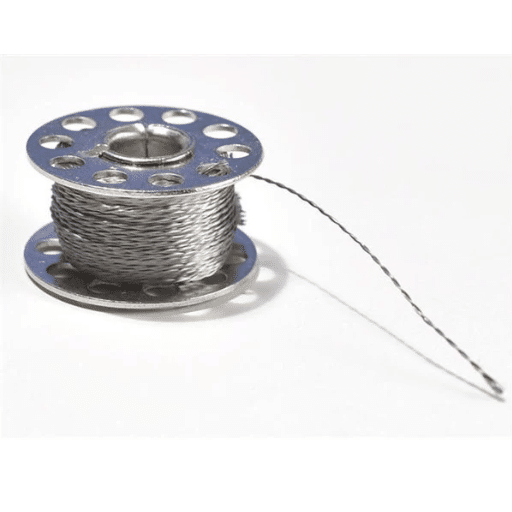
Alloy Composition and Conductivity
The alloy’s composition is of paramount importance when it comes to thermal and electrical conductivity. Alloys are made of two or more elements, and generally, a base metal is mixed with one or more additional elements to get specific properties desired.
Example: Copper Alloys
Copper alloys such as brass and bronze have lower thermal conductivity than pure copper, attributed to electron scattering from addition of elements like zinc or tin. The intrinsic conductivity is influenced by amount of added elements, atomic sizes, and electron configurations.
Example: Nickel-Based Superalloys
Designed to enhance high-temperature strength while controlling thermal conductivity. Increasingly used in gas turbines and aerospace engineering. High-purity alloys reflect superior performance as they lack structural impurities that disrupt heat or electricity flow.
Temperature Effects on Conductivity
| Material Type | Temperature Effect |
|---|---|
| Metals | Electrical conductivity drops as temperature rises. Increased lattice vibrations scatter electrons, making flow more difficult. |
| Semiconductors | Conductivity increases with temperature. Larger number of charge carriers gain energy and move in conduction band. |
💡 Recent Advancements: High-purity alloy technologies aim to minimize temperature-induced conductivity losses. Addition of certain alloying elements realizes sufficiently high conductivity at elevated temperatures for demanding applications like aerospace or high-performance electronics.
Surface Treatments and Their Impact on Conductivity
In environments that demand precision and reliability, surface treatments are crucial factors that determine the electrical conductivity of materials.
- Electroplating: Coating metals like silver or gold provides best conductivity due to less surface oxidation and superior current flow
- Anodizing: Enhances surface characteristics and decreases resistance
- Chemical Polishing: Reduces surface imperfections that impede conductivity
- Nanotechnology Applications: Advanced surface finishing increases conductivity at micro and nano scales for semiconductors and aerospace systems
Benefits of Using Stainless Steel
Stainless steel presents an extensive list of advantages, making it the most adaptable and dependable material for different industries.
🛡️ Corrosion Resistance
Outstanding resistance ensures material life even in severe conditions
💪 Durability
Exceptional strength and heat resistance for demanding applications
♻️ Sustainability
100% recyclable, supporting eco-friendly practices
💰 Cost-Effective
Low maintenance costs and long lifespan
✨ Aesthetic Appeal
Sleek, polished appearance for modern designs
🏭 Versatile
Suitable for multiple industries and applications
🔧 Key Protective Feature:
Chromium content allows stainless steel to build a thin layer of passive protection against rust and environmental harmful effects. Recent statistics show “long-lasting materials for harsh environments” searches increased over 30%, reflecting growing concern about material reliability.
Applications in Electrical Circuits

🔌 Connectors and Terminals
Widespread use due to long lifespan and resistance to environmental degradation. Leads to stable electrical performance throughout product lifespan.
📡 Cable Trays and Supports
Preferred for electrical installations for safe wiring carrying and organizing. Corrosion-resistant nature suitable for both indoor and outdoor use, especially harsh industrial settings.
🔋 Battery Components
Used to manufacture battery parts due to ability to resist chemical interaction while providing longevity. Main usage in industrial and commercial high-performance batteries.
🔥 Heating Elements
Material of choice for manufacturing heating elements in appliances like ovens, toasters, and heaters due to high-temperature resistance.
📶 Shielding Materials
Sensitive electronic devices employ stainless steel for shielding of electromagnetic interference (EMI) and radio-frequency interference (RFI). Shields circuits from external noise for reliable and accurate operation.
When to Choose Stainless Steel Over Other Metals
When it comes to metals, stainless steel is always the one to go for if durability, corrosion resistance, and hygiene are the key factors.
| Priority Factor | Choose Stainless Steel? | Ideal Applications |
|---|---|---|
| Corrosion Resistance | ✅ Yes | Marine environments, chemical exposure, outdoor structures |
| Durability & Longevity | ✅ Yes | Bridges, monuments, construction, medical equipment |
| Hygiene Requirements | ✅ Yes | Food processing, medical devices, kitchenware |
| High Humidity Exposure | ✅ Yes | Coastal buildings, bathrooms, industrial facilities |
| Aesthetic Appeal | ✅ Yes | Modern architecture, decorative purposes, consumer appliances |
| Sustainability | ✅ Yes | Green building projects, eco-friendly manufacturing |
| Maximum Electrical Conductivity | ❌ No | Use copper or aluminum instead for wiring and power transmission |
| Rapid Heat Transfer | ❌ No | Use copper or aluminum for heat exchangers and cooling systems |
📊 Growing Trend:
Latest information shows that number of searches points out that in scenarios with a lot of humidity or exposure to chemicals, most people still select stainless steel due to its non-reactive surface and long-lasting performance. It’s touted for sustainability benefits as it’s recyclable and part of overall eco-friendly practices that consumers and industries are adopting.
References
-
Defense Technical Information Center (DTIC): Electrical resistivity and thermal conductivity of nine selected AISI stainless steels
This study provides detailed data on the electrical resistivity and thermal conductivity of various AISI stainless steels. -
Springer: Thermal conductivity and electrical resistivity of eight selected AISI stainless steels
Research presenting conductivity values for multiple stainless steel grades in both tabular and graphical formats. -
ScienceDirect: Thermophysical properties of stainless steels
A comprehensive analysis of the thermophysical properties, including conductivity, of stainless steels.
Frequently Asked Questions (FAQ)
What is the electrical conductivity of stainless steel?
When looking at the metal conductivity scale, stainless steel ranks among the worst in terms of electrical conductivity, being that it is still a lot better than carbon and other nonmetals. It has an electrical conductivity of approximately 1.4 x 10-6 ohm-meters, which is very low as compared to copper and so on, thus, it cannot be termed as a good conductor.
How does the thermal conductivity of stainless steel compare to carbon steel?
The thermal conductivity of stainless steel, which is approximately 15 watts per kelvin per meter, is quite a lot less than that of carbon steel, which may be around 45 watts per kelvin per meter. Therefore, even though stainless steel can transfer heat, it is in direct competition with carbon steel in terms of conducting efficiency.
Is stainless steel a good conductor of electricity?
For sure, stainless steel is in the same category as other steels that have low conductivity. It can be said that its electrical conductivity rate is much lower than the one of conventional metal conductors like copper and, as such, its use in power conduction applications will not be fitting.
What are the benefits of stainless steel in construction?
The foremost among all the benefits of using stainless steel in structures is its non-corrosive quality. It is this feature that makes stainless steel a preferred material for AESS applications, where the twin factors of good appearance and long life are equally important.
Can stainless steel be used in soldering applications?
Yes, but care should be taken that the right methods and materials are used while soldering stainless steel to get a strong bond. Sometimes the soldering process can be hindered by the oxide layer that covers the stainless steel, hence, it is very important to have good surface preparation beforehand.
How does the thermal conductivity of stainless steel affect its performance?
Undoubtedly, one of the disadvantages of stainless steel is its low thermal conductivity. This property, in conjunction with its high strength and corrosion resistance, makes it a good material for many other applications but not for heat exchangers where rapid heat transfer is required.
What is the alloy composition of stainless steel?
Stainless steel is an alloy that consists of iron, chromium and sometimes nickel, the latter which makes it more resistant to corrosion. The combination of elements produces such a variety of properties like those of stainless steel which include poor thermal conductivity compared to many other metals such as copper and aluminum.
Is stainless steel a good material for electrical components?
Although the electrical conductivity of stainless steel is not the greatest, its mechanical molecules, durability and corrosive resistance still attract its application in electrical components. It’s just that for those applications where only poor conductivity is acceptable, stainless steel can be a good option.
How does the conductivity of stainless steel compare to copper and aluminum?
To put it clearly, the electrical conductivity of stainless steel is multiple times lower than that of both copper and aluminum. Copper is characterized as the best conductor of electricity, aluminum, despite being slightly less conductive than copper, still scores better than stainless steel in both electrical and thermal conductivity.

